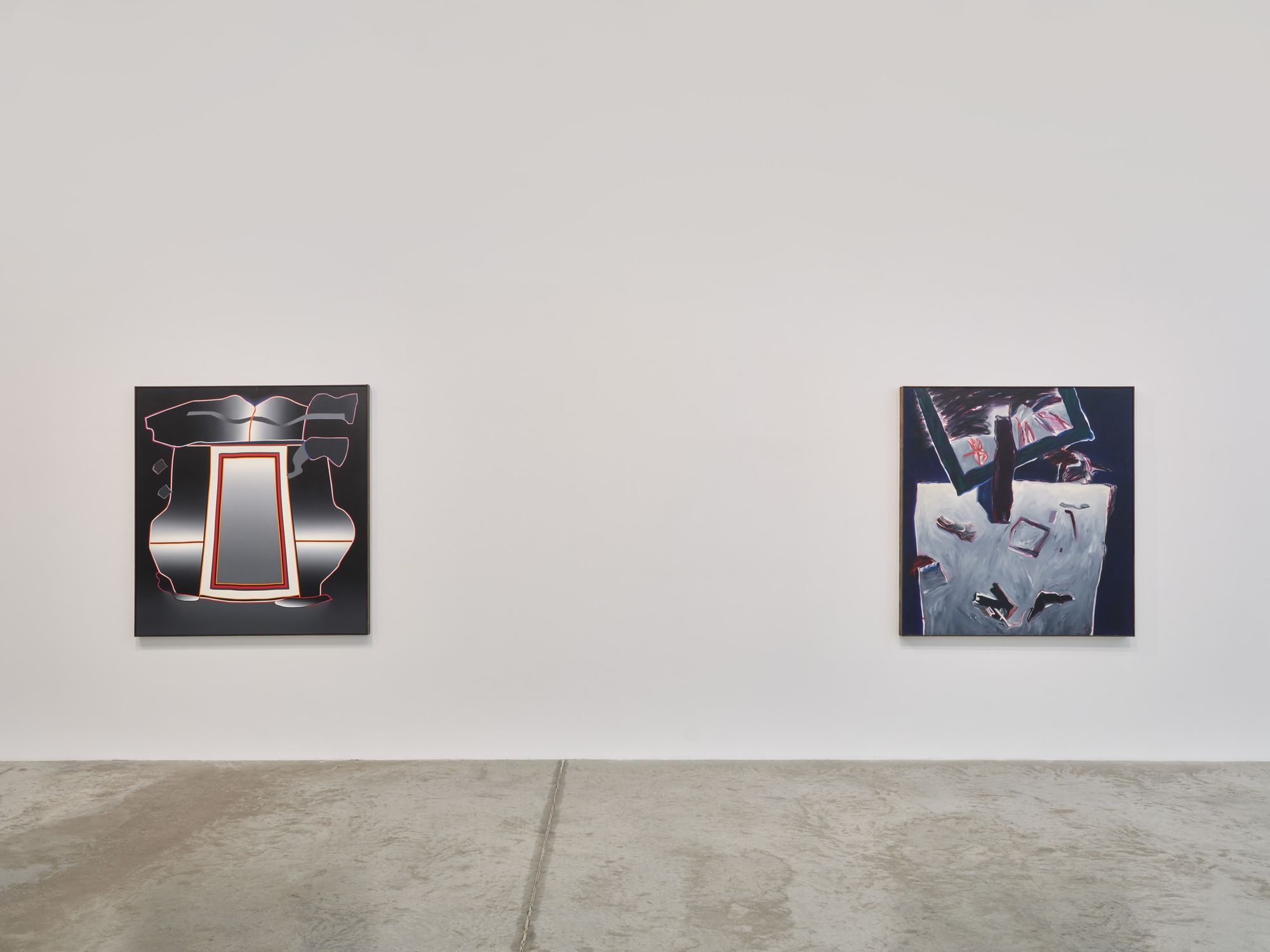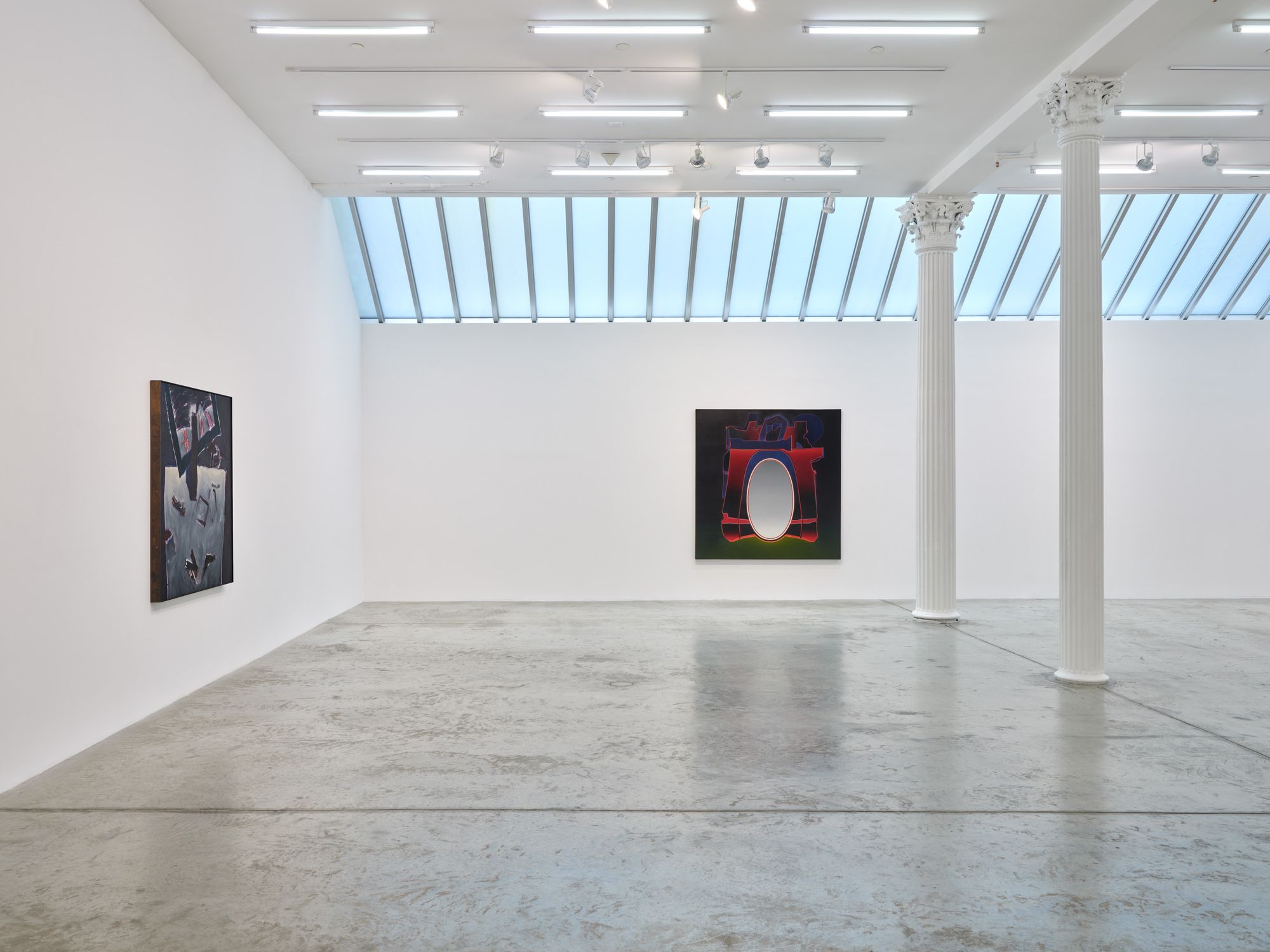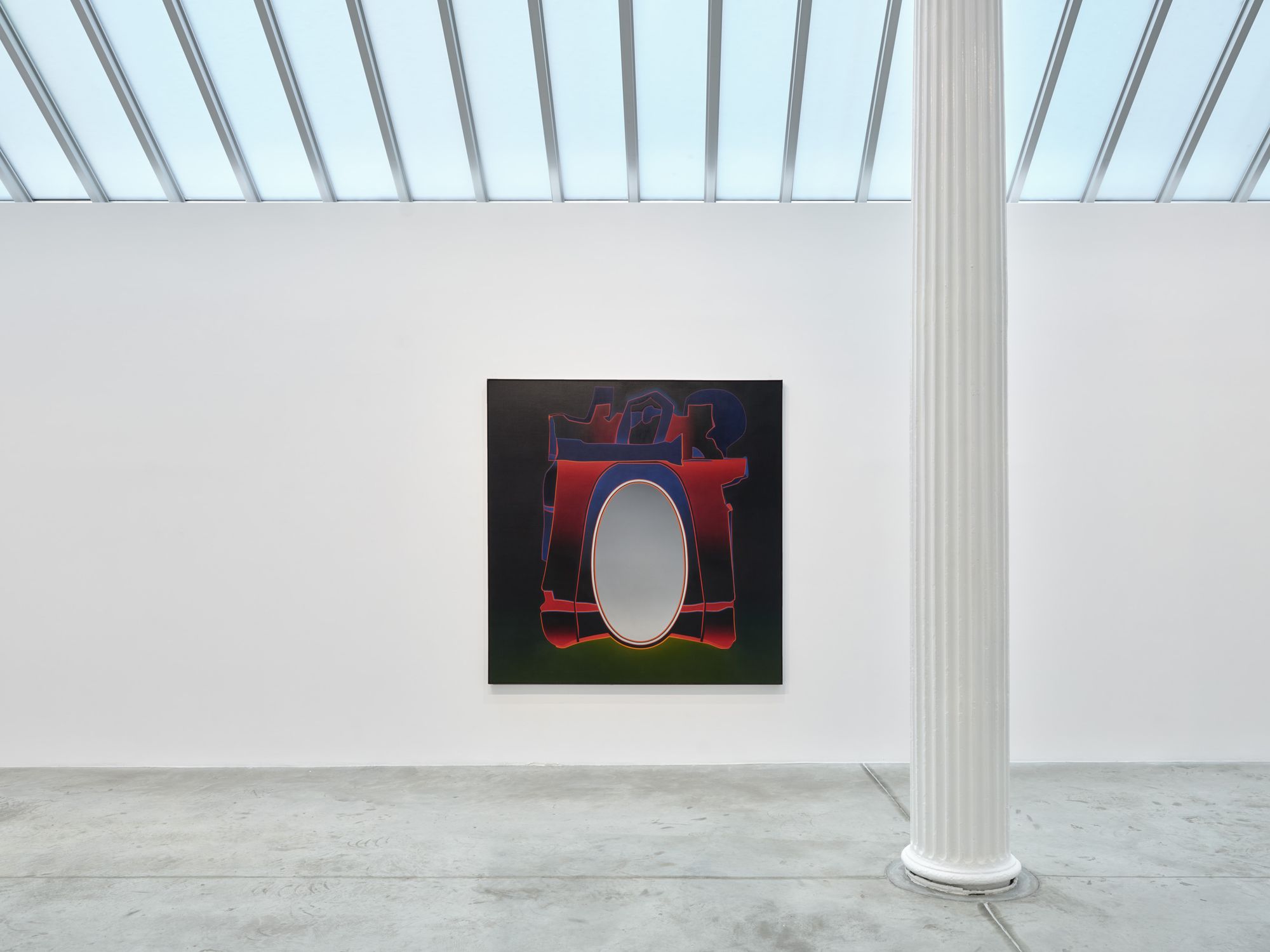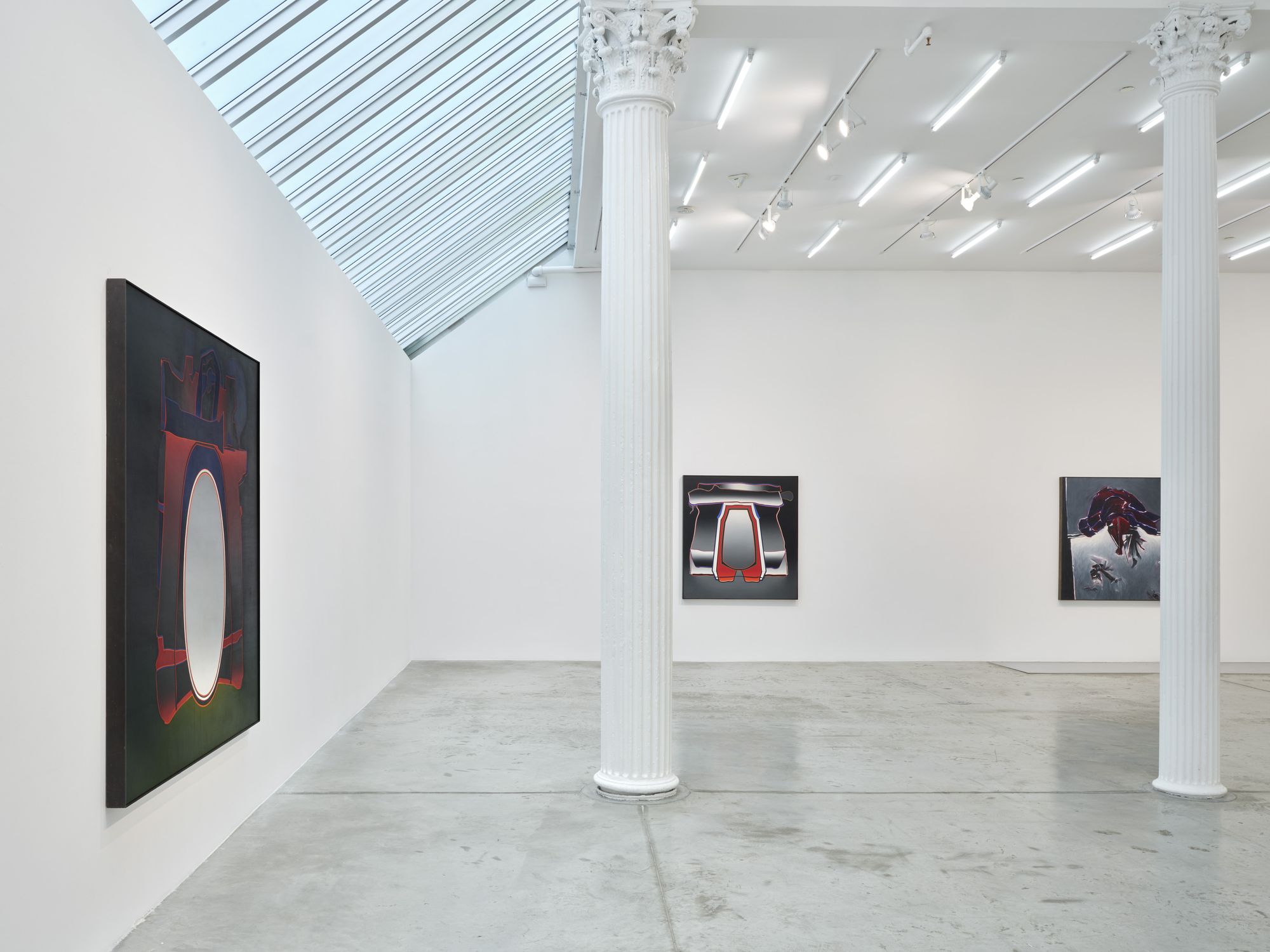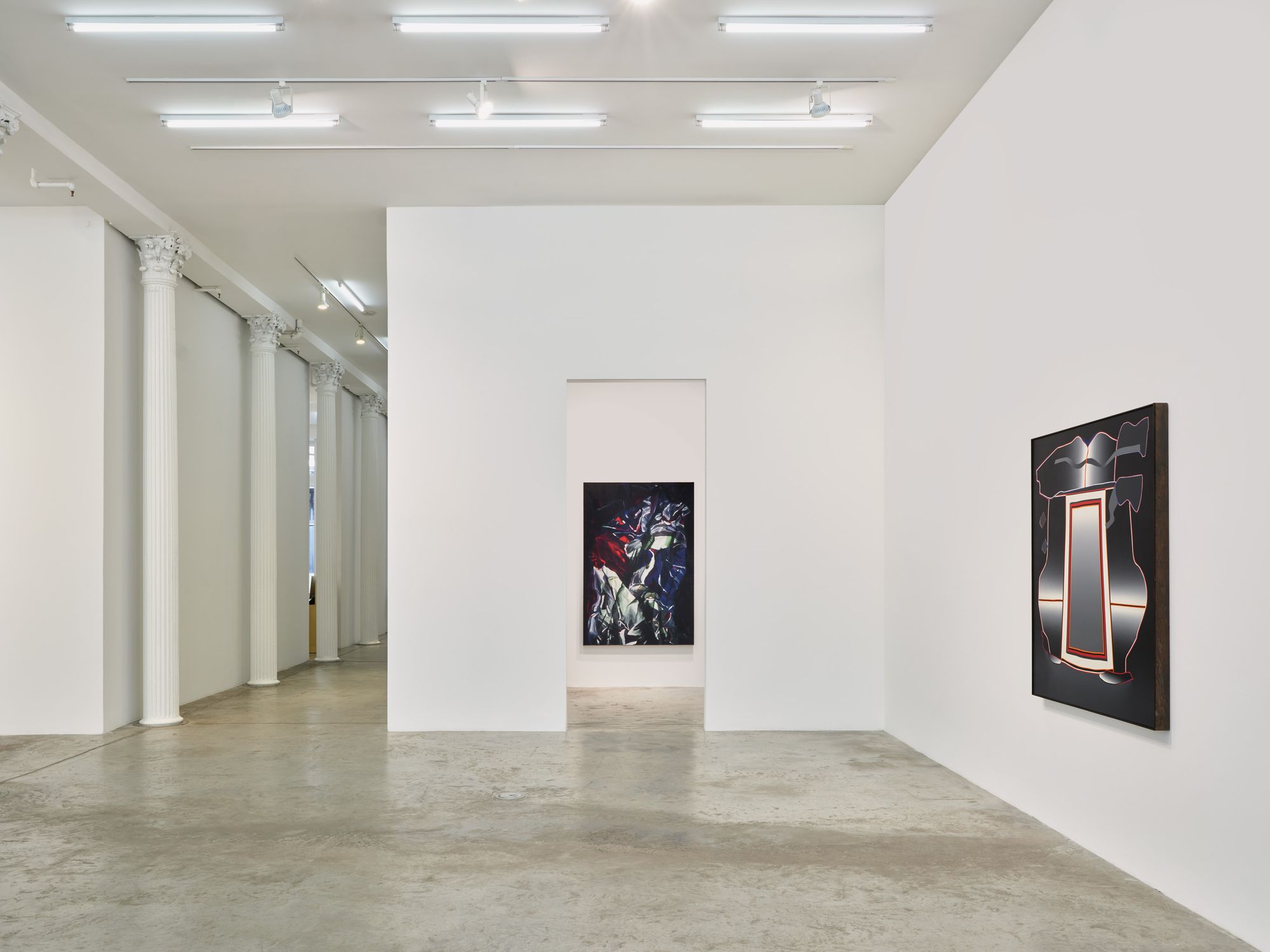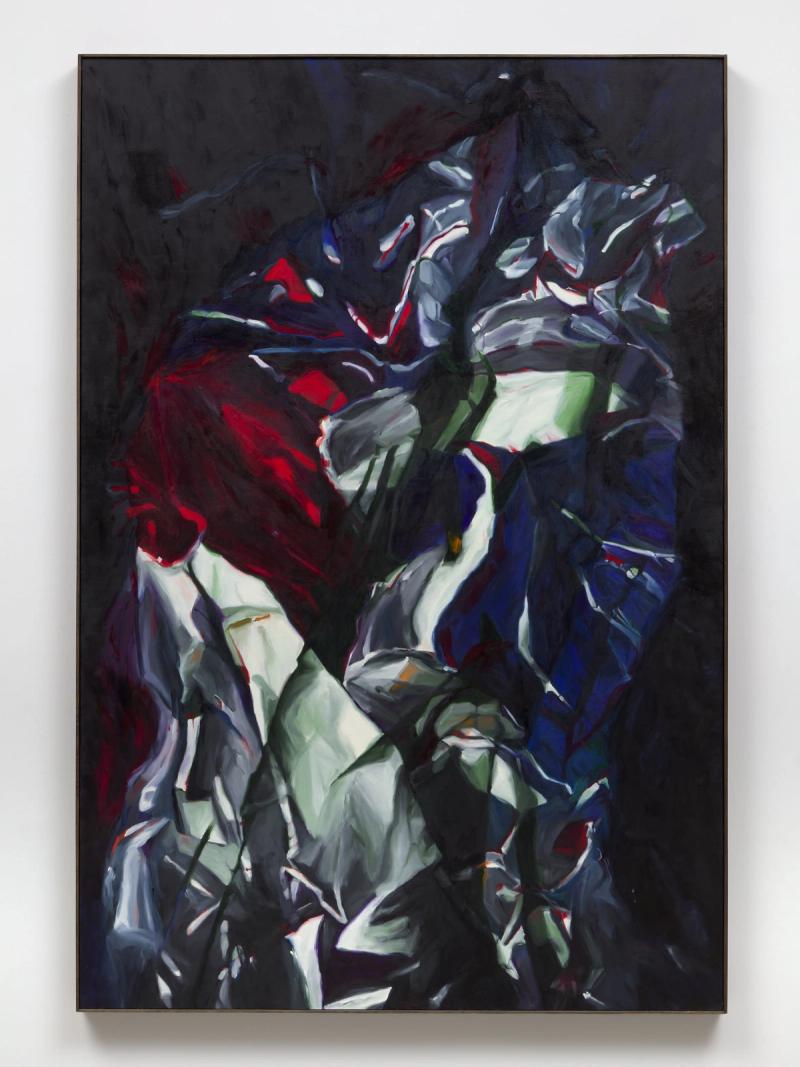
Bortolami is pleased to present the second solo exhibition by Deborah Remington (b. 1930, d. 2010) at the gallery. Mirrors features works from three distinct junctures in Remington’s career, from some of the artist’s most iconic compositions to rare and never before exhibited paintings. The exhibition coincides with the release of the artist’s first monograph, published by Rizzoli Electa.
Remington achieved notoriety in the early 1960s for an inscrutable approach to hard edge abstraction, painting an iconography of irregular, organic shapes rendered with startling precision. Her heraldic imagery, both biomorphic and mechanistic at once, encircled luminous, mirror-like surfaces painted with gradients of black, white and gray. She painted the irregular perimeter of each shape with brilliant bands of orange, blue or green, as if the metallic surfaces within were a conduit for the bold, electric lines which surrounded them.
In 1965, Remington relocated from San Francisco to New York. Both the San Francisco Museum of Modern Art and The Whitney Museum of American Art acquired major paintings and in the ensuing two decades, dozens of American museums followed suit. For whatever acclaim she received, Remington evaded contextualization with other contemporary painters. As Grace Glueck wrote in a 1977 New York Times review, “One of the oddest, least traceable images in current art is the mysterious form persistently painted by Deborah Remington.” Remington was seldom asked to exhibit with other artists and most discourse on her painting avoided the subject entirely.
This body of work culminated in Remington’s first survey exhibition, which traveled to several museums in California. Her final hard edge painting, Zanthus (1983), was finished just in time for this show. It depicts a reflective surface split in two, illuminated from multiple directions.
Two years after the survey show, Remington opened exhibitions in New York and Los Angeles with radically reinvented paintings. She stripped away almost every recognizable facet of her work, save for her color palette. Her mirrored shapes were now angled into perspectival space, as if they were tabletops in dimensionally ambiguous “rooms.” On them, she placed arrangements of painterly, otherworldly forms, as if she had crumpled up the compositions from previous decades and painted them anew, as fully dimensional still life objects. Her thin oil glazes were supplanted by gestural brushstrokes that recalled her Abstract Expressionist beginnings in 1950s San Francisco and the influence of one of her first mentors, Clyfford Still, at the California School of Fine Arts.
The late ‘80s exhibitions received glowing praise from critics, who commended Remington’s conviction to this hairpin turn in her aesthetics. Nonetheless, Remington seldom exhibited paintings such as Santee (1986) or Troas (1987) again. Mirrors marks the first time they have been shown together in nearly 40 years.
Remington, in fact, rarely exhibited from 1990 until her passing in 2010. She grew disillusioned with the vagaries of the art world, its periodic aversions to painting, and a persistent gender bias towards women artists. Despite a diminished audience in her later years, Remington continued to innovate in the studio, creating many works which would not be seen until after her death. Paintings such as Vertum (1995) depict compressed, sculptural masses of blue, red, and white receding into dark and indeterminate space. Her mirrored shapes, now imbued with colorful glimpses of their surrounding environments, were no longer parallel to the picture plane or tilted into space, but twisted into splintered, animated forms suggestive of a constant flux – a fitting parable to an artist who remains unmoored to any art historical canon.
Works

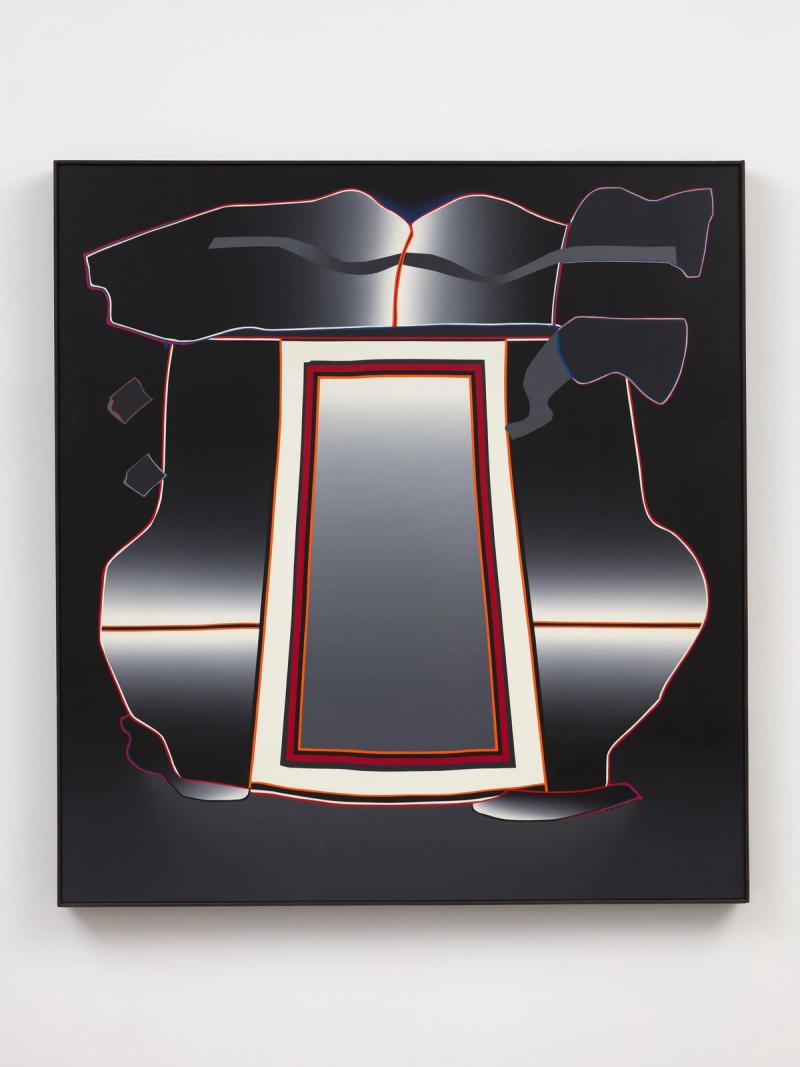
Aldwych, 1973
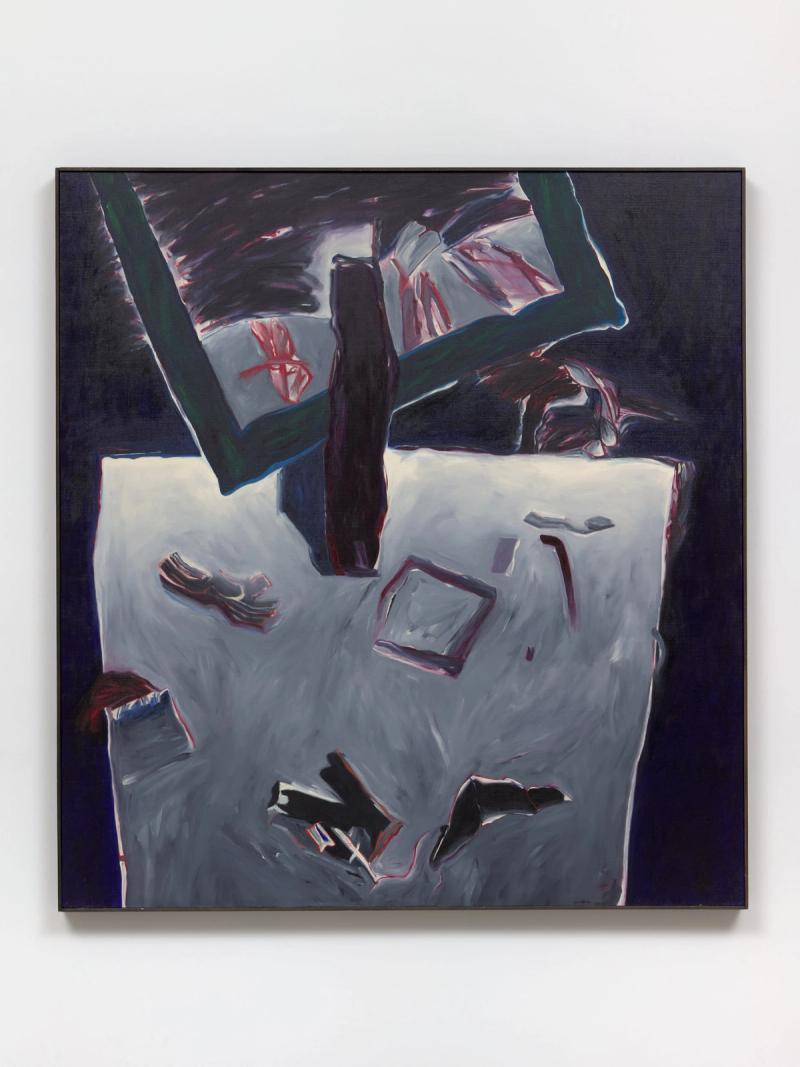
Santee, 1986
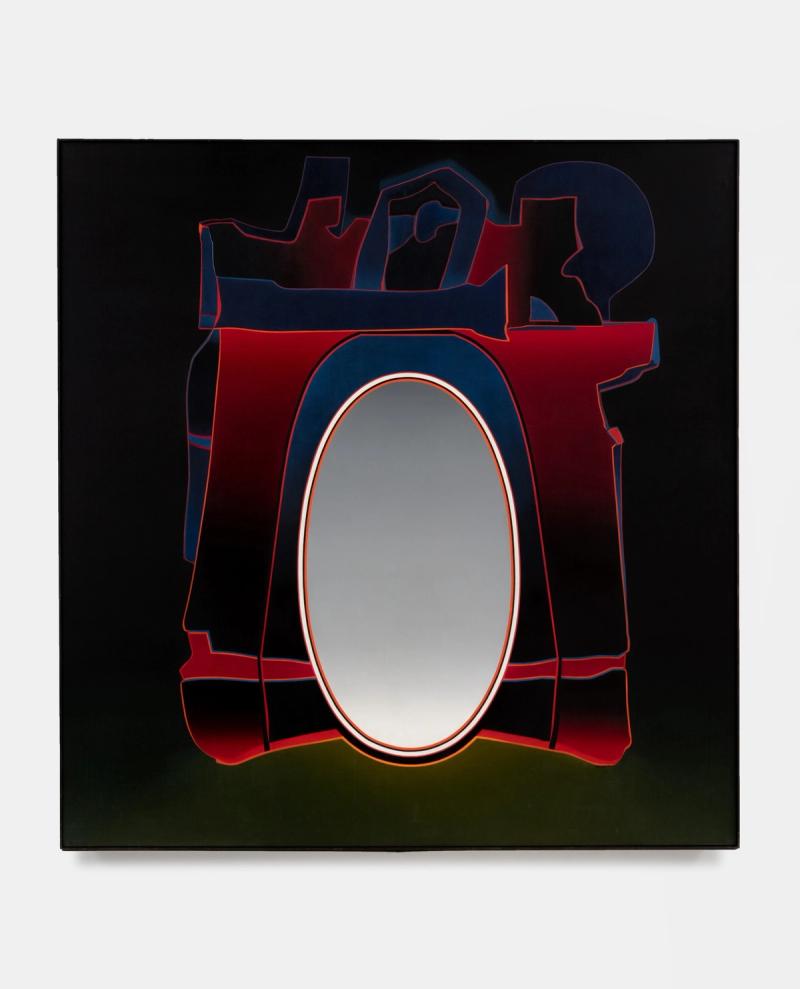
Devon, 1969
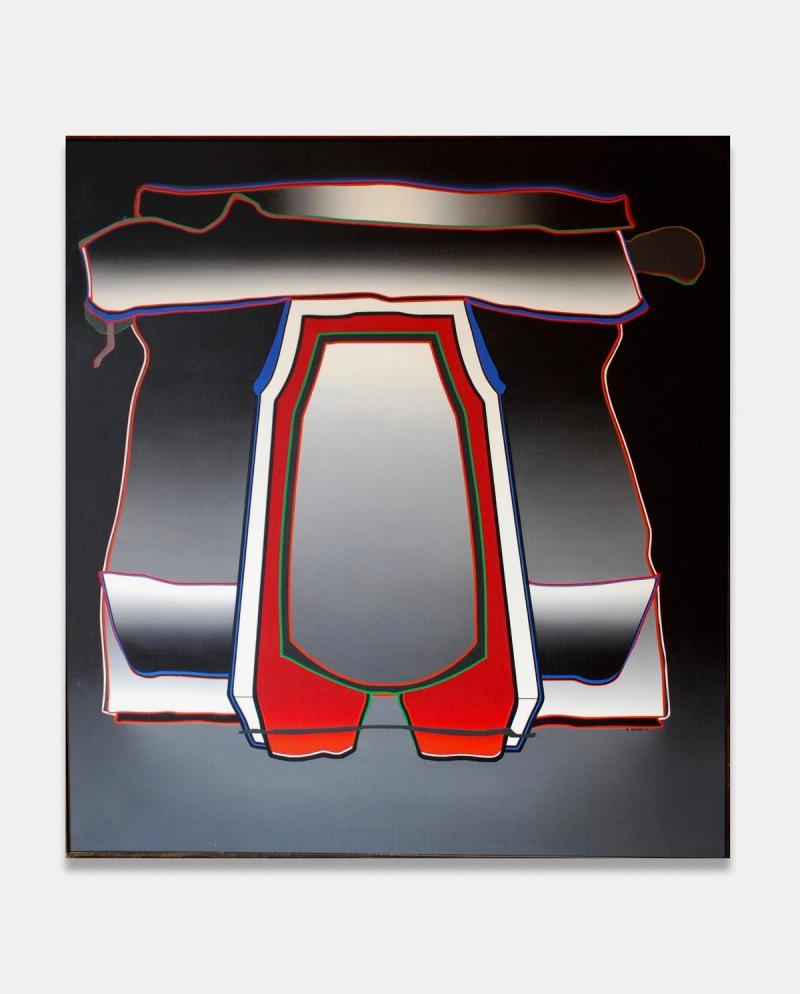
Tanis, 1974
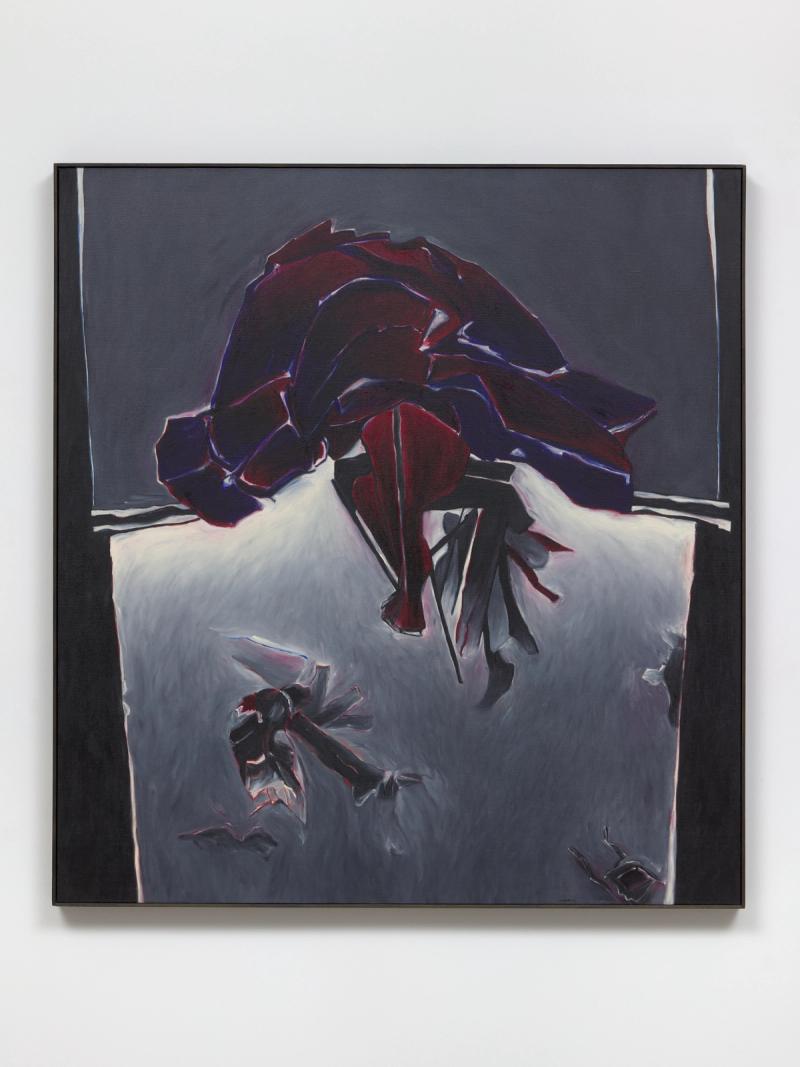
Troas, 1987
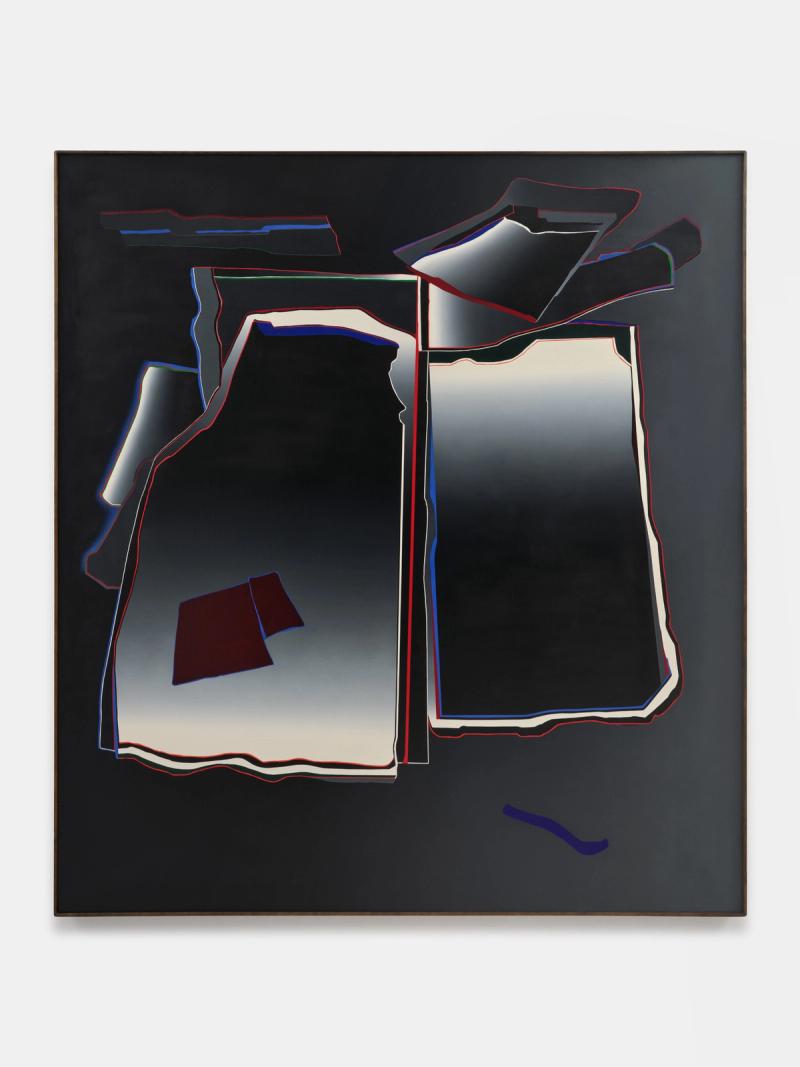
Zanthus, 1983


